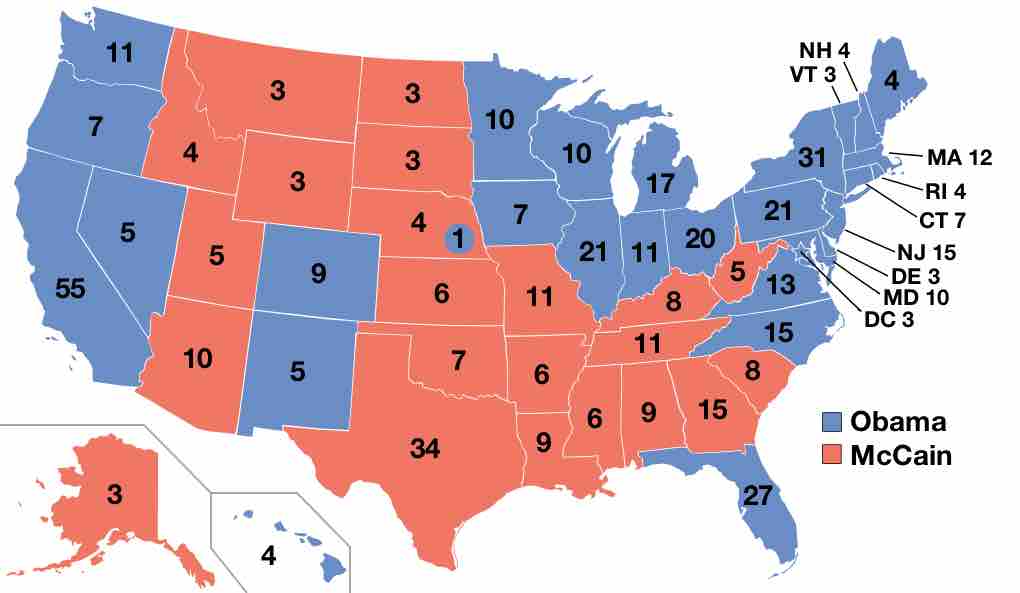In the United States, a presidential election is held every four years and includes both a primary season and a general election. During the primary season, the two major political parties narrow the field of candidates through state votes to nominate the party's candidate for the general election. Because parties provide candidates with voter and staff networks and material resources, they have an incentive to present a unified front and only support one candidate, hence, winning the primary season is a necessary first step to becoming a major candidate in a general election. In the primary season, candidates compete against other members of their party to win a majority of votes from voters within their own party. By contrast, in the general election, candidates from each party compete against each other, and voters are able to vote for either candidate at the polls.
The winner of a presidential general election is not simply the person who receives the majority of votes nationwide. Instead, votes are allocated indirectly through members of the Electoral College. Under this system, statewide elections take place in which voters cast ballots for candidates. Whichever candidate wins the majority of votes in the state receives that state's Electoral College votes. Electoral College votes are divided proportionally based on state population, meaning that larger states have more influence in the election than smaller ones . Because a candidate only needs to win a majority of votes in the state to receive all of its Electoral College votes, this system has lead to election strategies in which states with a solid Republican or Democratic majority are not contested by candidates. Instead, candidates focus their campaigns on so-called "swing states. " Swing states are those without a clear majority party, in which all of the state's Electoral College votes are therefore up for grabs. The most notorious swing states in recent years have been Florida and Ohio, since each is generally unpredictable, and each has a significant number of Electoral College electors.

Electoral College (2008)
In the presidential general election, the winner is determined based on who receives the greatest number of votes in the Electoral College system.
Because candidates in the general election must appeal to vast numbers of voters across a large geographic range, general elections are immensely expensive. Candidates tend to fund their campaigns in part with their personal wealth but also by fundraising extensively. Fundraising may include appealing to wealthy large donors, organizing grassroots campaigns to amass small donations from large numbers of voters, or tapping into political party funds. In recent years, PACs or political action committees, have arisen to amass large funds and produce campaign advertisements on behalf of their favored candidates. A 2010 Supreme Court decision in the case known as Citizens United further paved the way for PACs to exert a large influence in general elections. According to Citizens United, contributions to PACs are not limited so long as the PACs are not directly affiliated with a candidate. Consequently, the 2012 election has witnessed a rise of "super-PACs," political action committees with unprecedented purchasing power who have produced numerous expensive TV and print ads.
The presidential general election lasts from the end of the primary season, usually in June, until the vote on the first Tuesday of November. Since the president is the most visible elected official in the country, the election season is so long, and so much money is spent on advertising, the presidential general election has greater voter turnout than any other U.S. election. Even so, voter turnout usually hovers at or below 60% of eligible voters. In some cases, voter turnout strongly impacts the outcome of elections. As a general rule, white elderly voters turnout more reliably than any other demographic group, and they vote consistently Republican. Thus, some analysts argue that high turnout favors Democratic candidates, since the turnout increase usually indicates greater number of young and minority voters.